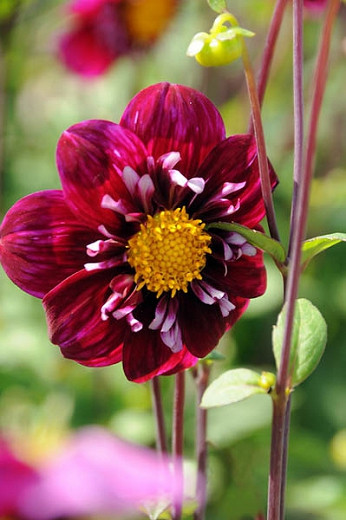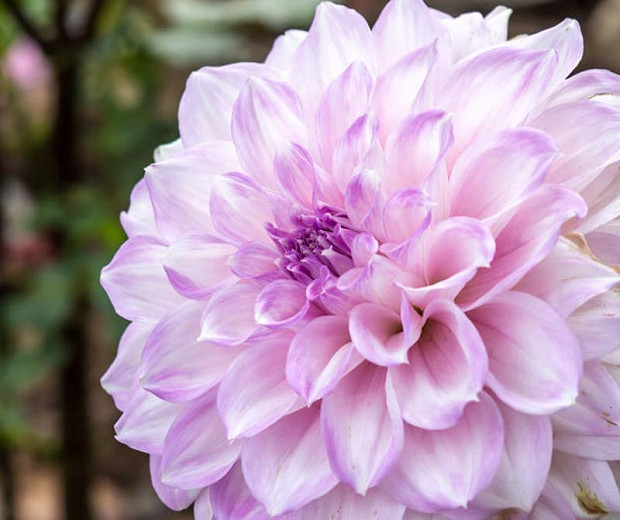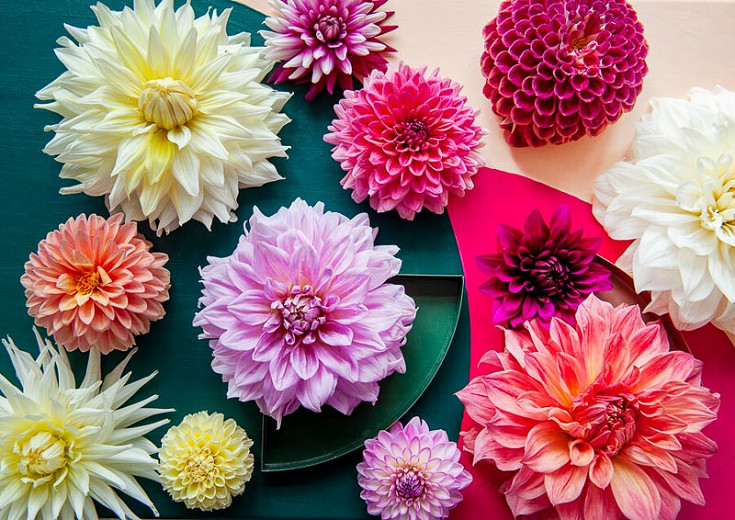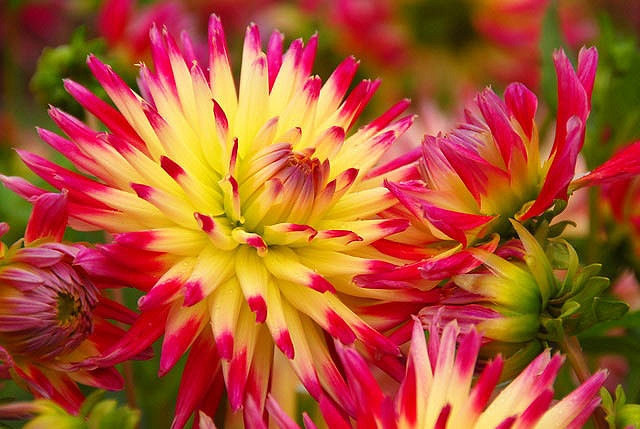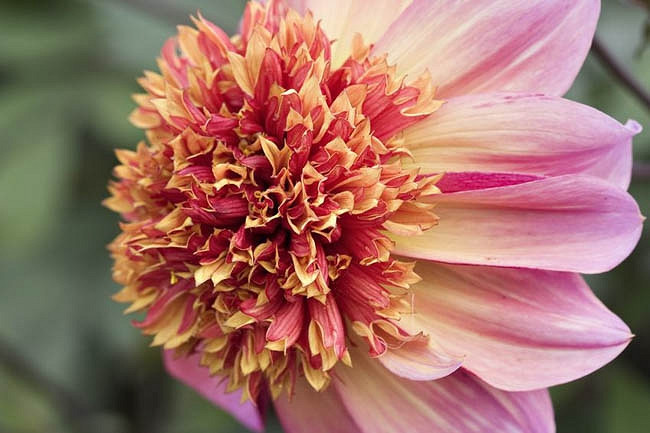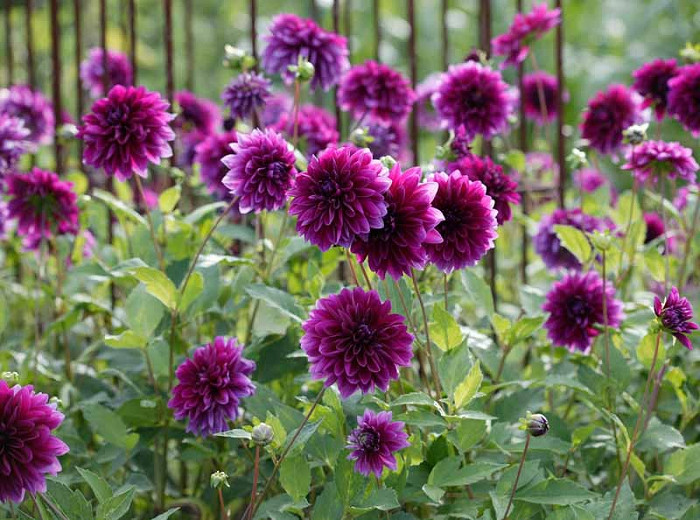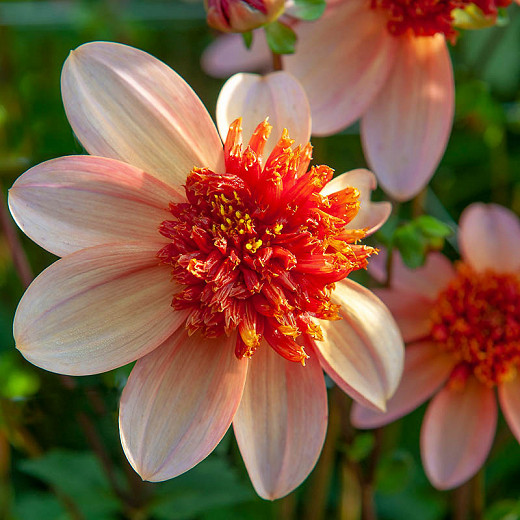Dahlia Impression Fantastico
Dahlia ‘Impression Fantastico’ is particularly elegant with its purple and magenta petals adorned with a ring of white tiny petals at their heart.
Dahlia 'Impression Fantastico' is particularly elegant with its purple and magenta petals adorned with a ring of white tiny petals at their heart. The delicate flowers stand up nice and straight even when it rains. 'Fantastico' is a dwarf Collarette Dahlia which belongs to the lovely Impression Series primarily bred for bedding and for use on balconies and patios. Others include Impression 'Fuego', Impression 'Fabula', Impression 'Festivo', Impression 'Fortuna'.
- Blooming massively from July until Frost, this dahlia grows up to 12-20 in. (30-50 cm) and is an excellent choice to create a lovely garden display or for showing.
- A great pick for borders, containers or as cut flowers thanks to its superb vase life. Did you know that the more you cut Dahlia flowers, the more flowers you get? This makes Dahlias twice as nice: pretty in a vase, pretty in the garden. A great big flower in a vase or floating in a shallow bowl makes the perfect eye-catcher.
- Best flowering occurs in full sun, but light shade will be welcomed in hot summer areas.
- Provide consistent moisture during the growing season and do not allow soils dry out. Plant in a sheltered location to protect your dahlias from strong winds.
- Best in groups of 5 for best visual effect. Deadhead spent flowers to promote growth of additional flower buds.
- Toxic to dogs, toxic to cats, toxic to horses.
- If you live in a cool area (hardiness zones 3-7) and you want to save your dahlia bulbs, or more precisely, your dahlia tubers for next spring, you may dig them up before the first frost and store them over winter before replanting them next spring. Store them in boxes, covered with moistened sand in a cool, dark, frost-free place where temperature remains between 45-50 °F (7-10°C).
- This Dahlia is a member of the Collarette Dahlias, which present small to medium flowers with large flat ray petals surrounding an open center. Within the ray and surrounding the center is a wreath of shorter petals, often of a different color: this forms the “collar.”. They make real eye-catchers!
- Dahlias come originally from Central and South America, particularly Mexico where they are the national flower. In their homeland, their natural habitats are cool moist mountain slopes. Their flowers were prized for their beauty early on, and the Aztecs used the tubers as a food crop as well as for medicinal purposes. Botanists who boarded the ships of the Spanish conquistadores discovered the imposing flower in the 17th century. Europeans first tested them as a food crop but soon admired them for their beautiful flowers. The plant was named in honor of A. Dahl, a Swedish botanist. This scientific name became so established that a common name for dahlias never took hold.
Requirements
| Hardiness | 8 – 11 |
|---|---|
| Heat Zones | 1 – 12 |
| Climate Zones | 1, 2, 3, 4, 5, 6, 7, 8, 9, 10, 11, 12, 13, 14, 15, 16, 17, 18, 19, 20, 21, 22, 23, 24 |
| Plant Type | Bulbs |
| Plant Family | Dahlia |
| Exposure | Full Sun |
| Season of Interest | Summer (Mid,Late)Fall |
| Height | 1' – 2' (30cm – 60cm) |
| Spread | 1' – 2' (30cm – 60cm) |
| Spacing | 12″ – 18″ (30cm – 45cm) |
| Water Needs | Average |
| Maintenance | Average |
| Soil Type | Clay, Loam, Sand |
| Soil pH | Acid, Alkaline, Neutral |
| Soil Drainage | Moist but Well-Drained |
| Characteristics | Cut Flowers, Showy |
| Attracts | Butterflies |
| Garden Uses | Beds and Borders, Patio and Containers |
| Garden Styles | City and Courtyard, Cutting Garden, Informal and Cottage |
